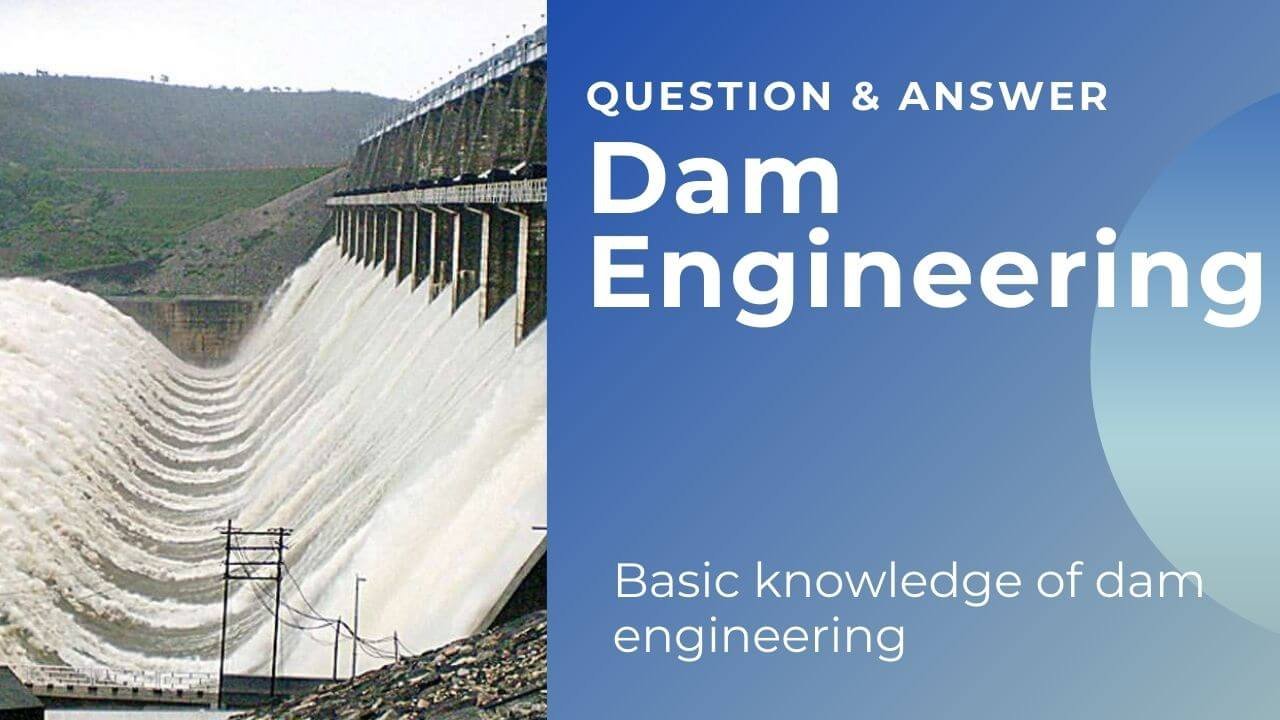In this article, we explained some general questions answer related to dam engineering. like what is dam, reservoir, maximum flood level, spillway, filter, drainage gallery, hydraulic jump, normal pool level, useful storage, etc. so please read the article till the end and if you think it is useful so please share it with your friends.
Table of Contents
What is dam engineering?
Dam engineering is defined as special discipline and a part of Geotechnical engineering, it provides technical information for planning, construction and maintenance of dams.
What is dam?
Dam is defined as a barrier constructed across river, for the purpose of storage of water, irrigation, hydroelectricity creation, etc.
What is spillway?
Spillway is a part of dam, constructed in a dam or out of dam, for the purpose to regulate flow of river. Sometimes it is also called as sluice valve.
What is a reservoir?
When a barrier constructed across river such as a dam, water get stored in a upstream side of dam, forming a pool of water, generally it is called as reservoir.
What is normal pool level?
Normal pool level is defined as a maximum water level in a dam in normal condition.

What is dead pool level?
Dead pool level is defined as minimum water level in a dam below which the store water is not usable.
What is useful storage in dam?
Water store between normal pool level and dead pool level is known as useful storage of water.
What is maximum flood level (MFL)?
Maximum flood level is defined as a highest level of flood in a river in its past. Generally maximum flood level is useful for design of dam. In design process maximum flood level is known as design flood level.
What is surcharge in dam?
Surcharge is a excessive flow of water above the dam crest level.
What is crest?
Crest is defined as a topmost surface level of dam.
What is a drainage gallery?
Drainage gallery is defined as a space (shaft) in a dam for the purpose of inspection of dam, drainage, grouting and, etc. Generally the shape of drainage gallery is rectangular and the corners are curved.
What is hydraulic jump?
Hydraulic jump is defined as a sudden increase of water depth due to a change of water flow from supercritical flow to subcritical flow.
What is pitching?
Pitching is defined as the protection provided on upstream side of the earthen dam to protect the upstream face against wave action, etc.
What is impervious core?
Impervious core is defined as a central core of zoned type earthen dam made of impervious material like clay, for the purpose of avoiding seepage in dam and increase stability of dam.
What is cutoff?
Cutoff is defined as a foundation structure made of rigid material like steel, timber, concrete, etc. provided below the upstream river bed level for the purpose of reducing seepage effect in the foundation of dam.
What are the forces acting on a gravity dam?
There are multiple forces acting on gravity dam but the most common forces list given below.
- Water pressure
- Uplift pressure
- Self weight of dam
- Ice pressure
- Wave pressure
- Earthquake forces like inertia forces, hydrodynamic forces.
- Silt pressure
Also read: Forces acting on Gravity Dam | Components | Design Criteria
What are the most common type of dams?
The most common type of the are given below.
- Gravity dam
- Earthen dam
- Rock fill dam
- Arch dam
- Buttress dam
What is phreatic line in dam?
Phreatic line or seepage line is defined as a line within a dam section below which there is positive hydrostatic pressure and above which there is negative hydrostatic pressure.
How to avoid tension stress in gravity dam?
If the eccentricity of resultant force is less than or equal to one-sixth of base length, in this condition no tension produce in a dam.
Why filter is provided in a earthen dam?
Filter is provided in dam for the following purposes.
- To drain off the water seeping through earth dam safely.
- To reduce pore water pressure in the downstream portion of dam.
- To keep phreatic line within the body of the dam.
- To check the piping by checking migration of the particle.
What are the failure modes of the earthen dam?
The failures modes of earthen dam are as follow
- Overtopping
- Erosion of upstream slope by water waves
- Erosion of downstream slope due to wind and rain
- Sudden drawdown of upstream slope
- Seepage failures
- Failure by spreading
What are the failure modes of gravity dam?
The failure modes of gravity dam are as follow.
- Overturning of dam
- Sliding of dam
- Crushing failure of dam
- Failure due to tension

I am a Professional Civil & Structural Engineer having more than 4 years of experience in Engineering, Procurement and Construction industry. Here i sharing the latest updates of EPC Projects and Construction News.

